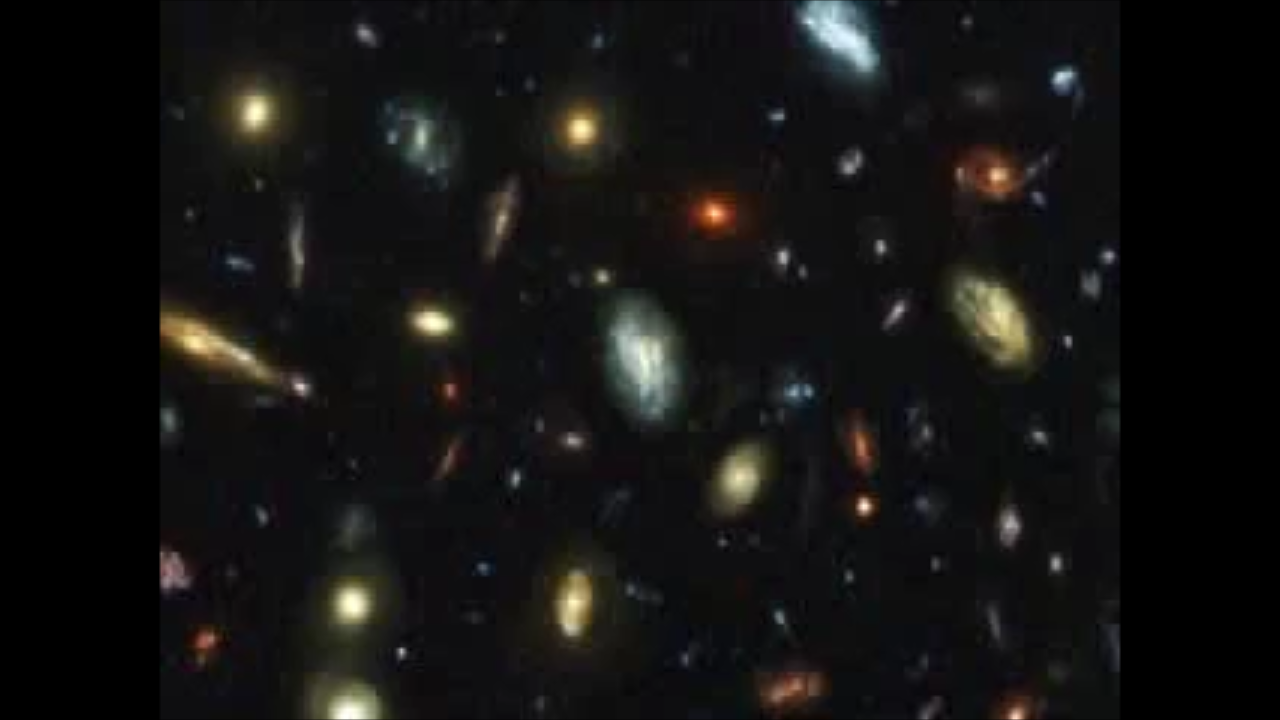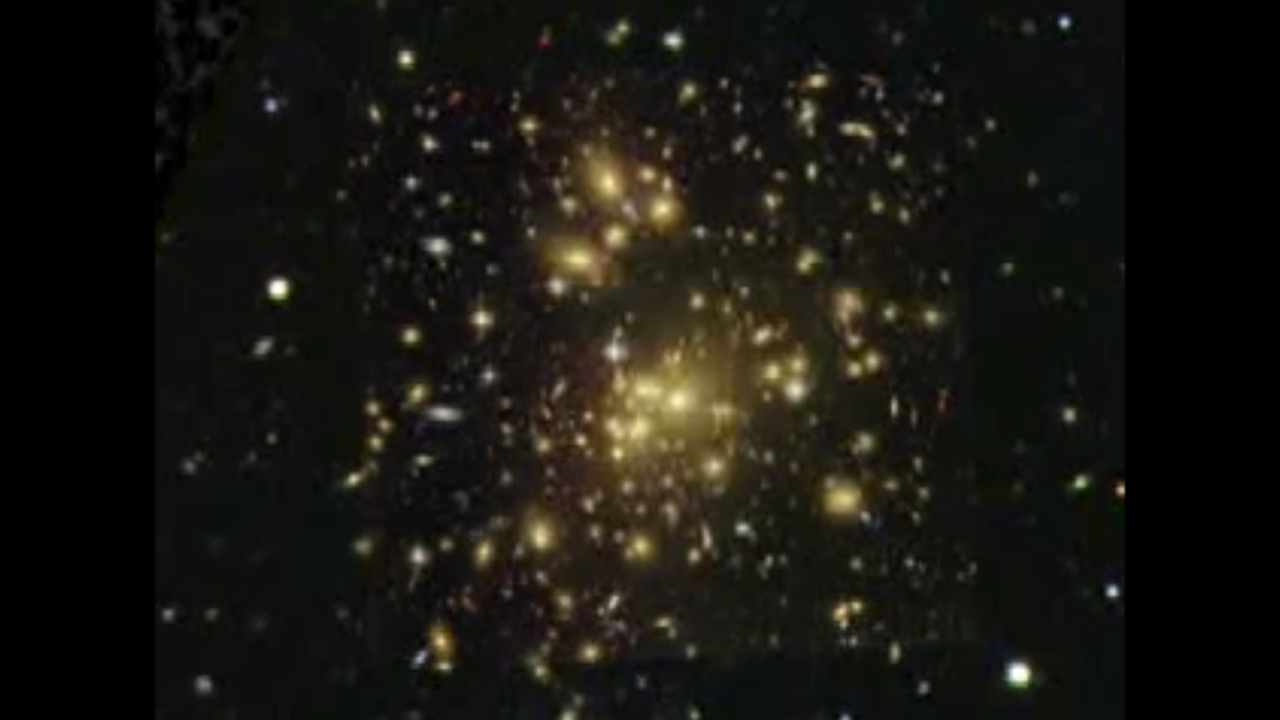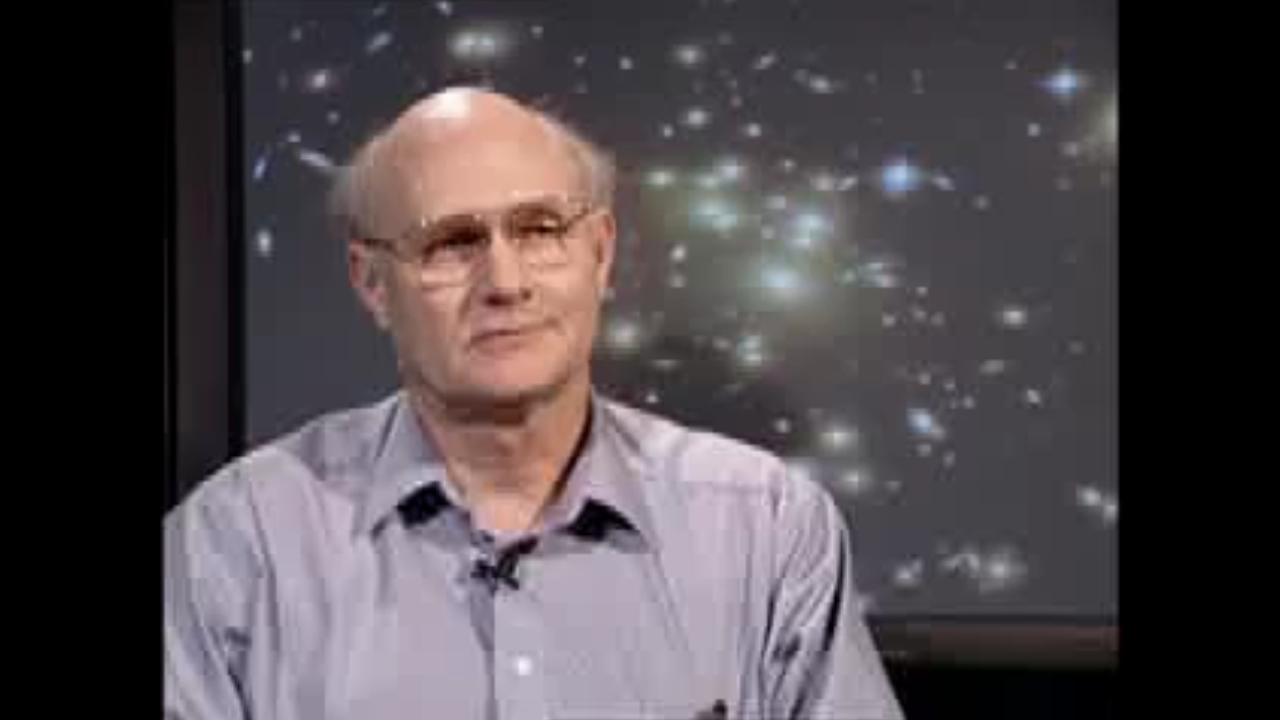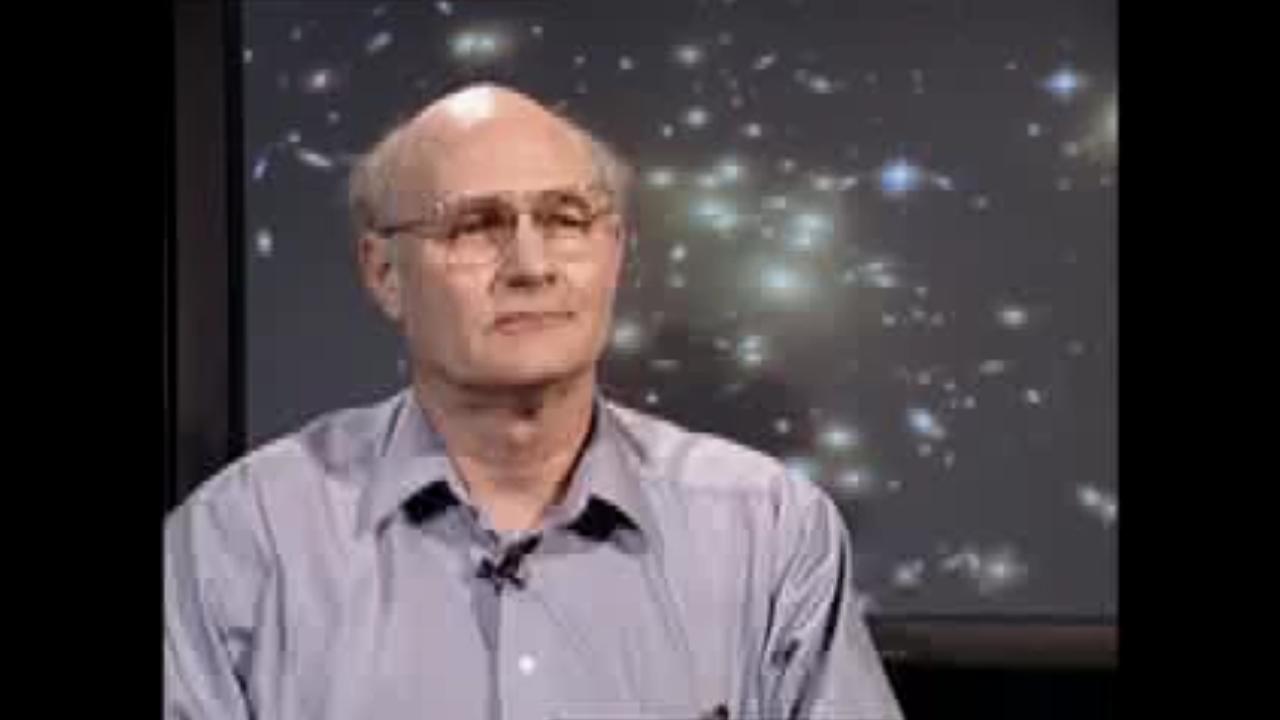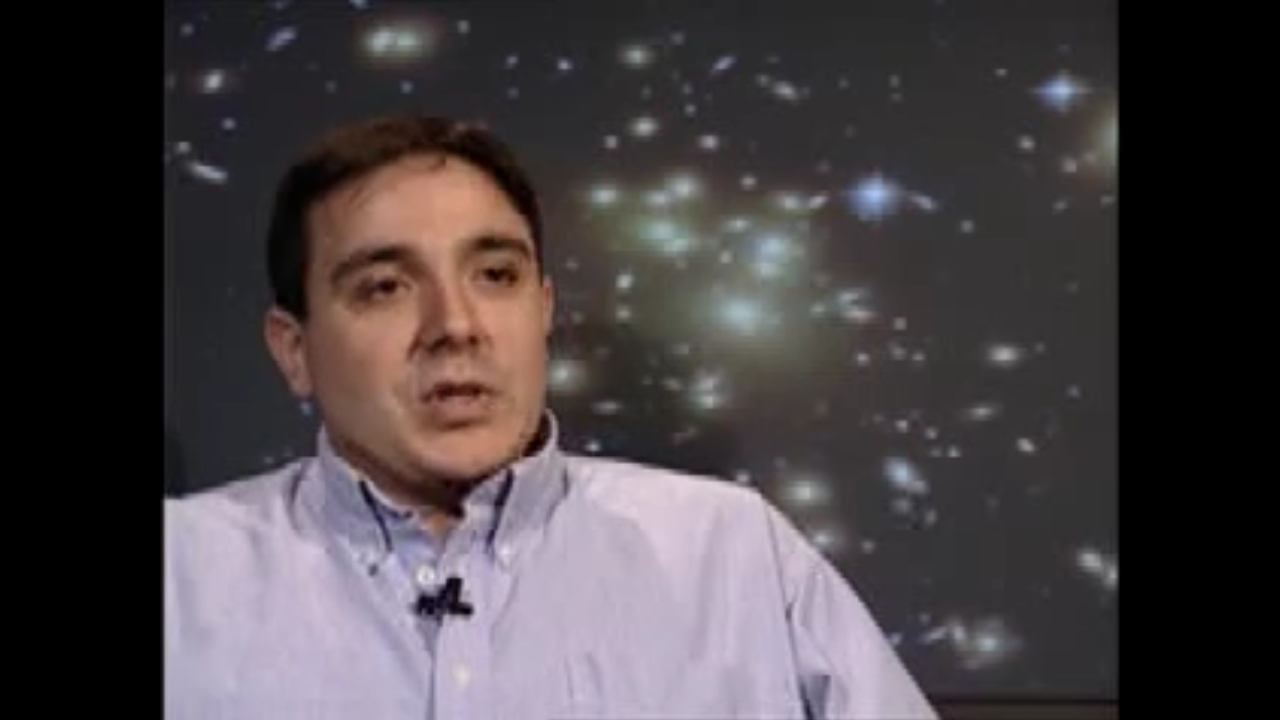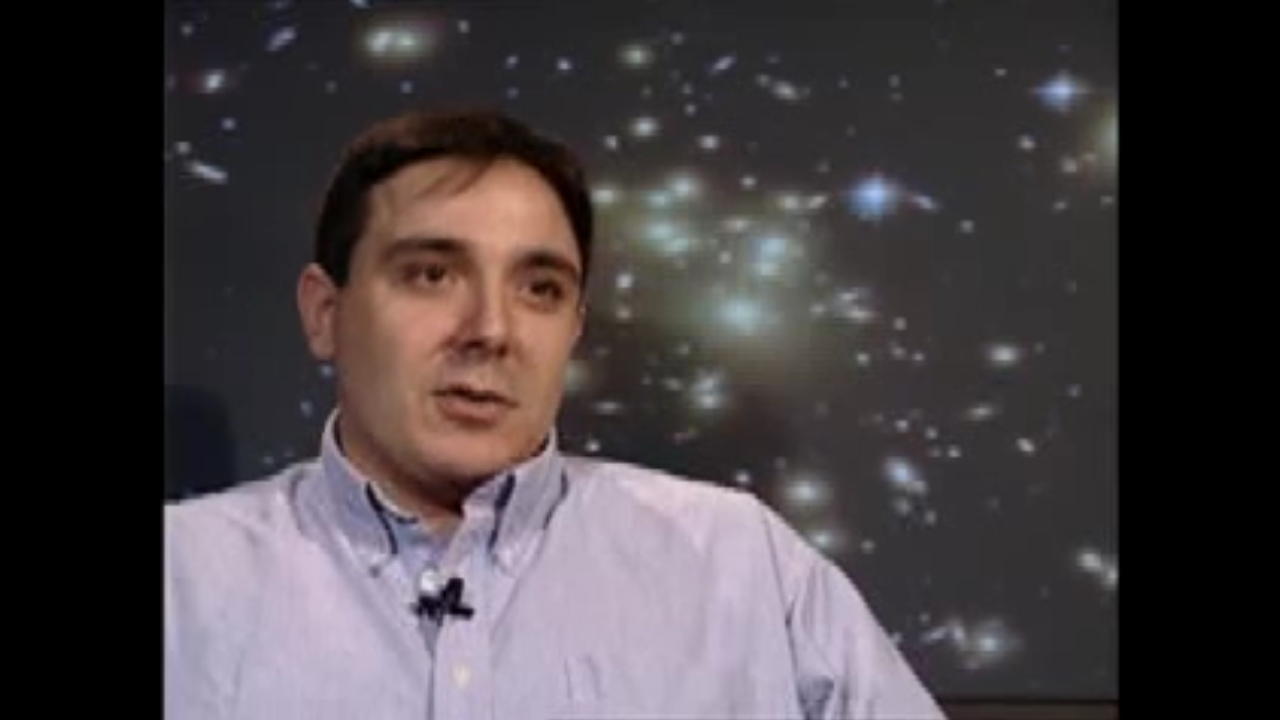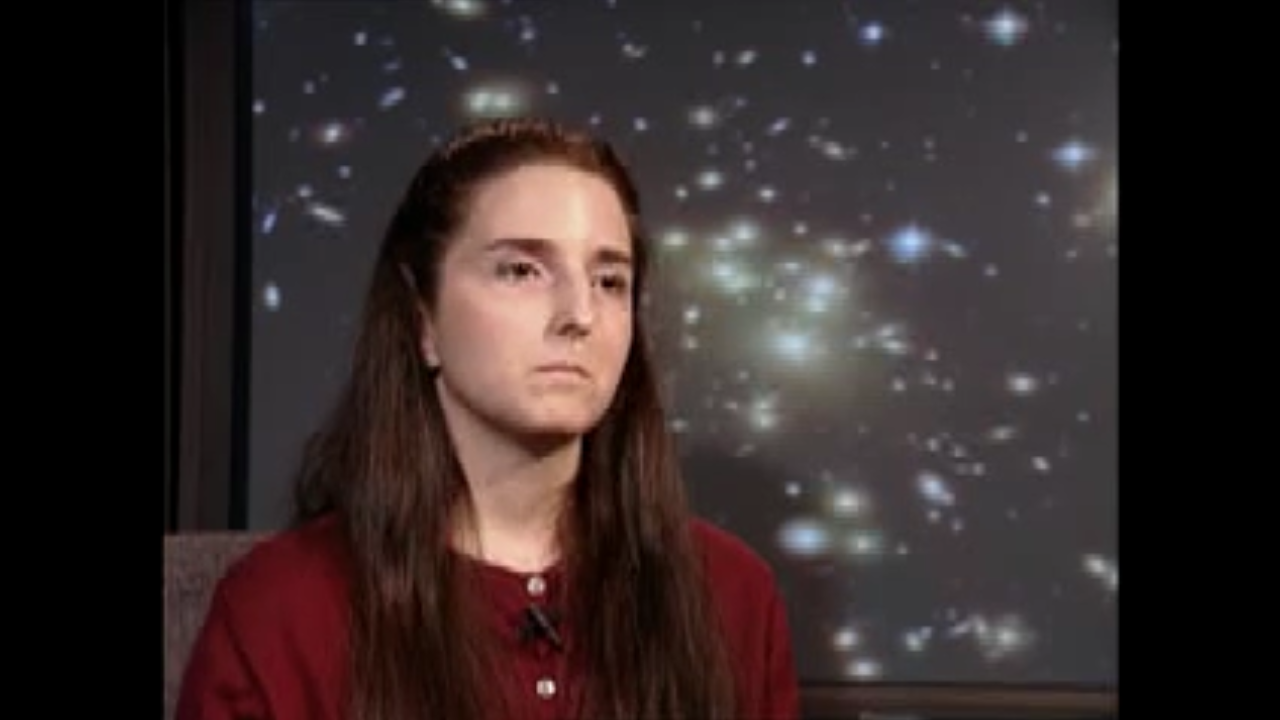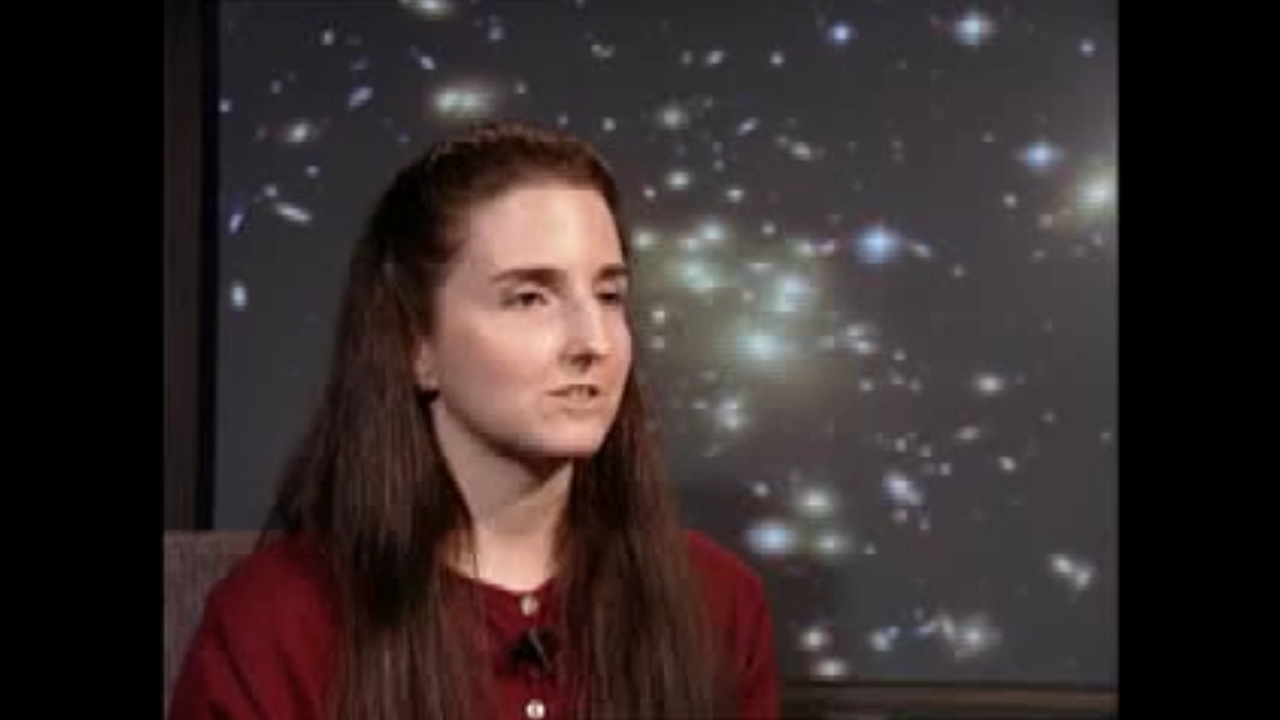1 min read
Galaxy Abell 1689’s “Gravitational Lens” Magnifies Light of Distant Galaxies

A massive cluster of yellowish galaxies, seemingly caught in a red and blue spider web of eerily distorted background galaxies, makes for a spellbinding picture from the new Advanced Camera for Surveys aboard NASA's Hubble Space Telescope. To make this unprecedented image of the cosmos, Hubble peered straight through the center of one of the most massive galaxy clusters known, called Abell 1689. The gravity of the cluster's trillion stars - plus dark matter - acts as a 2-million-light-year-wide "lens" in space. This "gravitational lens" bends and magnifies the light of the galaxies located far behind it. Some of the faintest objects in the picture are probably over 13 billion light-years away (redshift value 6).
Though gravitational lensing has been studied previously by Hubble and ground-based telescopes, this phenomenon has never been seen before in such detail. The ACS picture reveals 10 times more arcs than would be seen by a ground-based telescope. The ACS is 5 times more sensitive and provides pictures that are twice as sharp as the previous work-horse Hubble cameras. So it can see the very faintest arcs with greater clarity. The picture presents an immense jigsaw puzzle for Hubble astronomers to spend months untangling. Interspersed with the foreground cluster are thousands of galaxies, which are lensed images of the galaxies in the background universe. Detailed analysis of the images promises to shed light on galaxy evolution, the curvature of space, and the mystery of dark matter. The picture is an exquisite demonstration of Albert Einstein's prediction that gravity warps space and distorts beams of light.
This representative color image is a composite of visible-light and near-infrared exposures taken in June 2002.
About the Object
- R.A. PositionR.A. PositionRight ascension – analogous to longitude – is one component of an object's position.13h 11m 34.19s
- Dec. PositionDec. PositionDeclination – analogous to latitude – is one component of an object's position.-1° 21' 56.0"
- ConstellationConstellationOne of 88 recognized regions of the celestial sphere in which the object appears.Virgo
- DistanceDistanceThe physical distance from Earth to the astronomical object. Distances within our solar system are usually measured in Astronomical Units (AU). Distances between stars are usually measured in light-years. Interstellar distances can also be measured in parsecs.The distance to the lensing cluster is 2.2 billion light-years (675 megaparsecs).
- DimensionsDimensionsThe physical size of the object or the apparent angle it subtends on the sky.he ACS image is roughly 3.2 arcminutes (2 million light-years or 630 kiloparsecs) in width.
About the Data
- Data DescriptionData DescriptionProposal: A description of the observations, their scientific justification, and the links to the data available in the science archive.
Science Team: The astronomers who planned the observations and analyzed the data. "PI" refers to the Principal Investigator.Principal Astronomers / ACS science team: H.C. Ford (JHU), G.D. Illingworth (UCO/Lick Observatory), N. Benitez (JHU), M. Clampin (STScI), G.F. Hartig (STScI), D.R. Ardila (JHU), F. Bartko (Bartko Science & Technology), J.P. Blakeslee (JHU), R.J. Bouwens (UCO/Lick Obs.), T.J. Broadhurst (Racah Institute of Physics, The Hebrew University), R.A. Brown (STScI), C.J. Burrows (STScI), E.S. Cheng (NASA-GSFC), N.J.G. Cross (JHU), P.D. Feldman (JHU), M. Franx (Leiden Observatory), D.A.Golimowski (JHU), C. Gronwall (PSU), L. Infante (Pontificia Universidad Catolica de Chile), R.A. Kimble (NASA GSFC), J.E. Krist (STScI), M.P. Lesser (Steward Obs.), A.R. Martel (JHU), F. Menanteau (JHU), G.R. Meurer (JHU), G.K. Miley (Leiden Obs.), M. Postman (STScI), P. Rosati (ESO), M. Sirianni (JHU), W.B. Sparks (STScI), H.D. Tran (JHU), Z.I. Tsvetanov (JHU), R.L. White (STScI/JHU), and W. Zheng (JHU) - InstrumentInstrumentThe science instrument used to produce the data.HST>ACS/WFC
- Exposure DatesExposure DatesThe date(s) that the telescope made its observations and the total exposure time.June, 2002, Exposure Time: 13.2 hours
- FiltersFiltersThe camera filters that were used in the science observations.F475W (g), F625W (r), F775W (i), F850LP (z)
- Object NameObject NameA name or catalog number that astronomers use to identify an astronomical object.Abell 1689
- Object DescriptionObject DescriptionThe type of astronomical object.Galaxy Cluster, Gravitational Lens
- Release DateJanuary 7, 2003
- Science ReleaseBiggest ‘Zoom Lens’ in Space Takes Hubble Deeper into the Universe
- CreditNASA, N. Benitez (JHU), T. Broadhurst (Racah Institute of Physics/The Hebrew University), H. Ford (JHU), M. Clampin (STScI), G. Hartig (STScI), G. Illingworth (UCO/Lick Observatory), the ACS Science Team and ESA; The members of the ACS science team are: H.C. Ford (JHU), G.D. Illingworth (UCO/Lick Observatory), N. Benitez (JHU), M. Clampin (STScI), G.F. Hartig (STScI), D.R. Ardila (JHU), F. Bartko (Bartko Science & Technology), J.P. Blakeslee (JHU), R.J. Bouwens (UCO/Lick Observatory), T.J. Broadhurst (Racah Institute of Physics, The Hebrew University), R.A. Brown (STScI), C.J. Burrows (STScI), E.S. Cheng (NASA-GSFC), N.J.G. Cross (JHU), P.D. Feldman (JHU), M. Franx (Leiden Observatory), D.A. Golimowski (JHU), C. Gronwall (Pennsylvania State University), L. Infante (Pontificia Universidad Catolica de Chile), R.A. Kimble (NASA-GSFC), J.E. Krist (STScI), M.P. Lesser (Steward Observatory), A.R. Martel (JHU), F. Menanteau (JHU), G.R. Meurer (JHU), G.K. Miley (Leiden Observatory), M. Postman (STScI), P. Rosati (European Southern Observatory), M. Sirianni (JHU), W.B. Sparks (STScI), H.D. Tran (JHU), Z.I. Tsvetanov (JHU), R.L. White (STScI/JHU), and W. Zheng (JHU)

Related Images & Videos
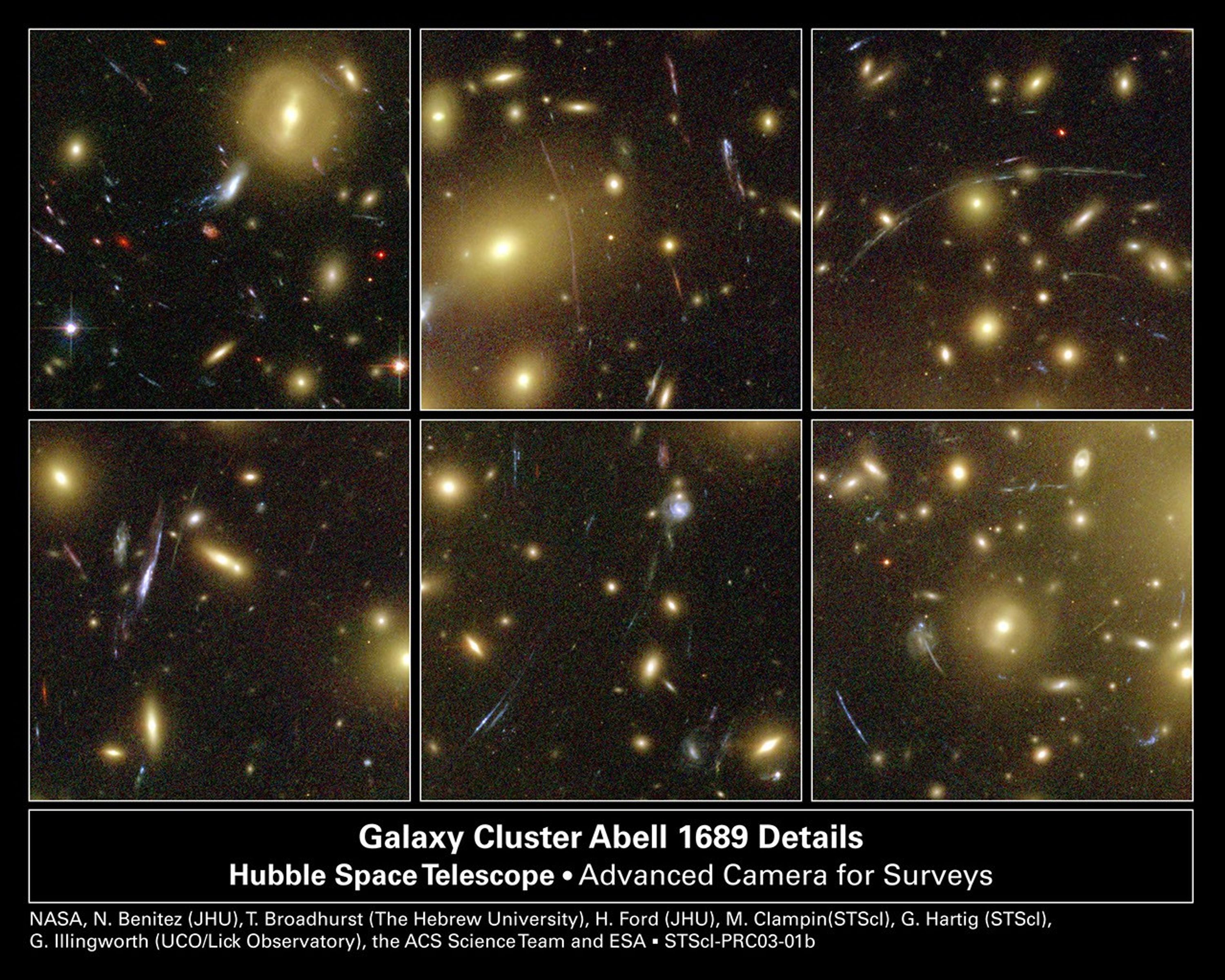
Gravitational Lens Arcs in Galaxy Cluster Abell 1689
A selection of cropped images from a NASA Hubble Space Telescope Advanced Camera for Surveys view of one of the most massive galaxy clusters known, called Abell 1689. These close-ups show "lensed" images of background galaxies that have been brightened and smeared by the...

Gravitational Lensing Illustration
Simulation of a gravitational lens moving across the Baltimore City skyline. The lens is produced by a compact and massive object, which bends space around it. This distorts light coming from any object behind the lens. The simulation shows how the lens distorts the background...
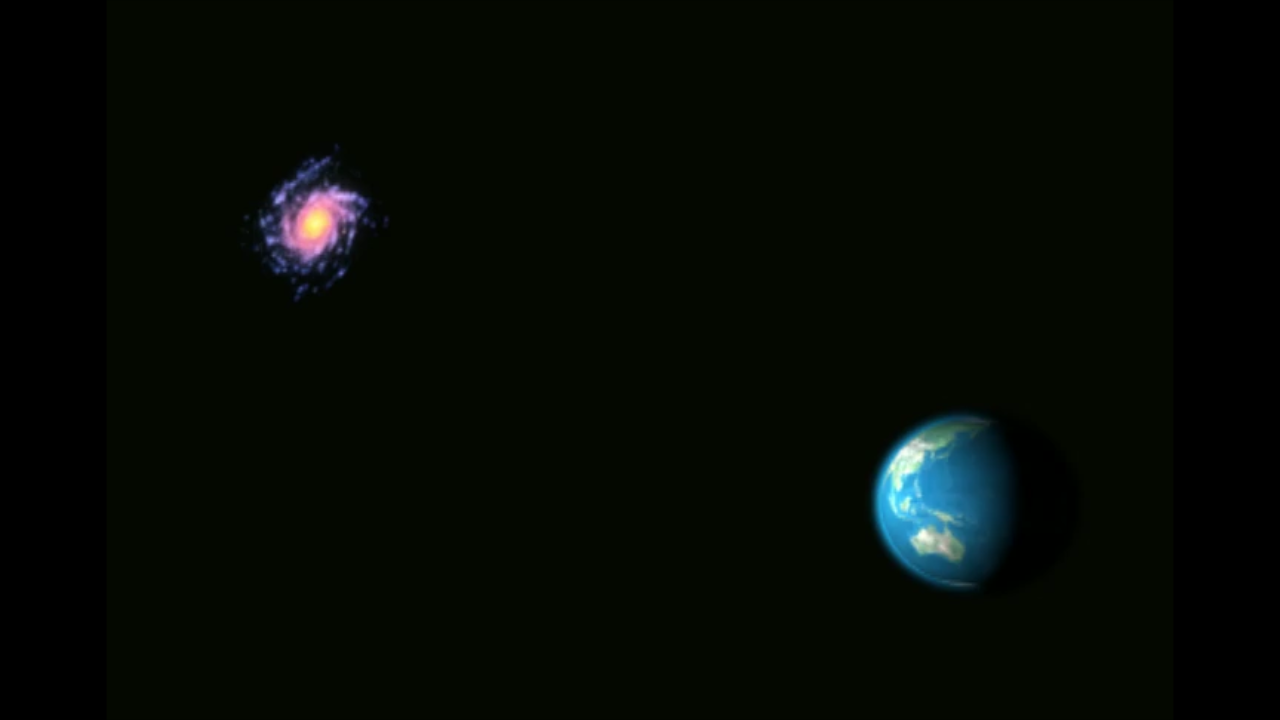
Gravitational Lensing Illustration
Simulation of light of distant galaxies as it is seen through dark matter or a gravitational lens, produced by the warping of space by galaxies and dark matter. This simulation shows how the lens distorts the background galaxies by bending the light and causing the light of the...
Share
Details
Claire Andreoli
NASA’s Goddard Space Flight Center
Greenbelt, Maryland
claire.andreoli@nasa.gov































